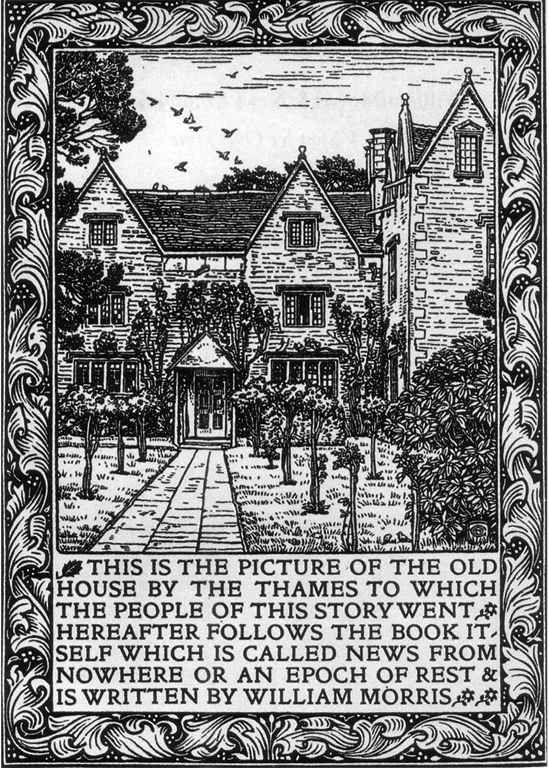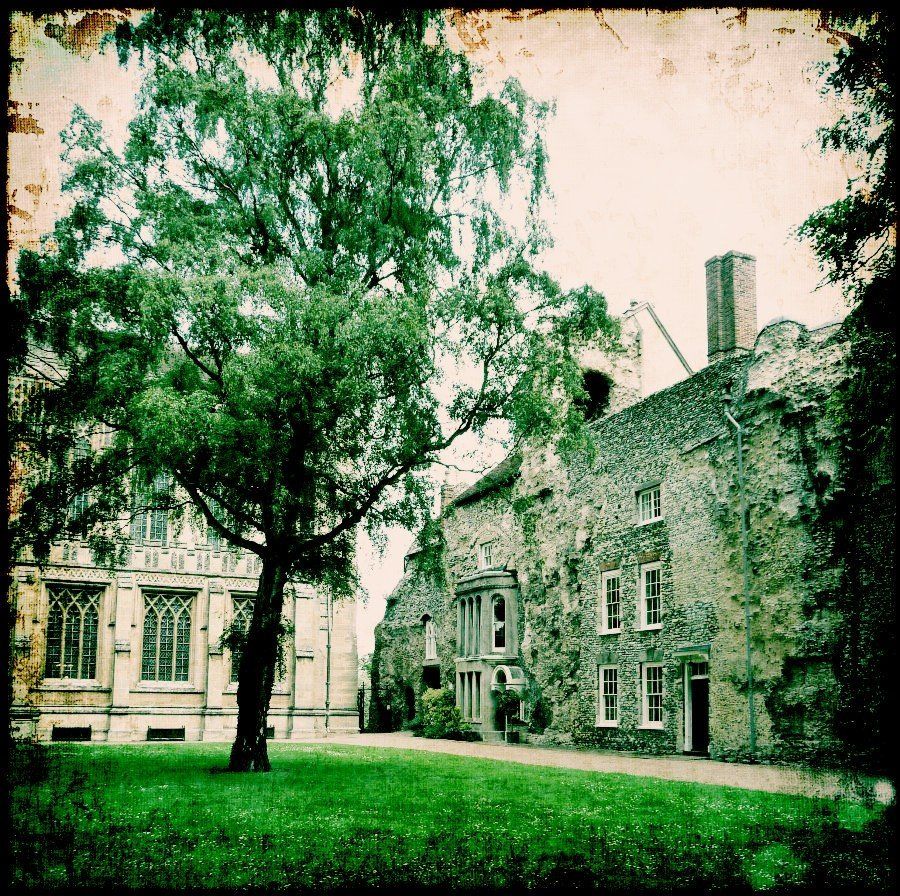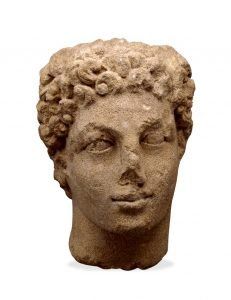William Morris is dead, long live William Morris
 William Morris died #OTD exactly 120 years ago. The 3 October 1896 was a bleak day for his friends and family. The Great Man was only 62, but had been failing for some time before. Nonetheless, that July Morris had travelled to Norway with a friend – his doctor knowing that this would be his last voyage. Apparently on the boat Morris asked to seated so his could see ‘the younger and prettier women…’ but the trip didn’t raise his usual enthusiasms for the wild landscapes of the north. His dear friends Sydney Cockerell and Emery Walker met him from the boat, and were informed that congestion of the lungs had now set in. He was still working – his last novel, The Sundering Flood
, was finished through dictation to Cockerell that August, but things were ending. Walker and Cockerell knew they couldn’t fill Morris’s shoes and decided not to continue Morris’s Kelmscott Press after he was gone – though both continued to advance and enhance the world of both private and commercial printing throughout their lives. His friends visited – Georgie and Edward Burne Jones, Philip Webb, F S Ellis – old friends. His wife, daughter May (his elder daughter, Jenny, was sick herself, and couldn’t come), Georgie and a couple of other friends were with him at the end, with Walker, Cockerell, Webb and Edward Burne Jones all there the day before, and immediately after. Georgie said he died ‘as gently, as quietly as a babe who is satisfied drops from its mother’s breast.’
William Morris died #OTD exactly 120 years ago. The 3 October 1896 was a bleak day for his friends and family. The Great Man was only 62, but had been failing for some time before. Nonetheless, that July Morris had travelled to Norway with a friend – his doctor knowing that this would be his last voyage. Apparently on the boat Morris asked to seated so his could see ‘the younger and prettier women…’ but the trip didn’t raise his usual enthusiasms for the wild landscapes of the north. His dear friends Sydney Cockerell and Emery Walker met him from the boat, and were informed that congestion of the lungs had now set in. He was still working – his last novel, The Sundering Flood
, was finished through dictation to Cockerell that August, but things were ending. Walker and Cockerell knew they couldn’t fill Morris’s shoes and decided not to continue Morris’s Kelmscott Press after he was gone – though both continued to advance and enhance the world of both private and commercial printing throughout their lives. His friends visited – Georgie and Edward Burne Jones, Philip Webb, F S Ellis – old friends. His wife, daughter May (his elder daughter, Jenny, was sick herself, and couldn’t come), Georgie and a couple of other friends were with him at the end, with Walker, Cockerell, Webb and Edward Burne Jones all there the day before, and immediately after. Georgie said he died ‘as gently, as quietly as a babe who is satisfied drops from its mother’s breast.’
 He is buried in a quiet corner of Kelmscott churchyard, where Janey, Jenny and May later joined him. It is an unassuming gravestone by an unassuming church. Morris loved Kelmscott church, a quiet 12th century building with little spectacle. Webb designed the gravestone, based on a piece of stonework that Webb found in the churchyard, making Morris’s tomb utterly of the place. Webb understood his old friend very well – their enthusiasms matching each others in art, architecture and socialism along the way – and I think Morris would have been pleased with the simplicity of it.
He is buried in a quiet corner of Kelmscott churchyard, where Janey, Jenny and May later joined him. It is an unassuming gravestone by an unassuming church. Morris loved Kelmscott church, a quiet 12th century building with little spectacle. Webb designed the gravestone, based on a piece of stonework that Webb found in the churchyard, making Morris’s tomb utterly of the place. Webb understood his old friend very well – their enthusiasms matching each others in art, architecture and socialism along the way – and I think Morris would have been pleased with the simplicity of it.
 What would William Morris say to his legacy? The obituaries of the day heralded him as a poet. Today his verse is little read. We know him as a designer, mostly, someone who created nice wallpapers and fabrics – and maybe we know he was the father of the Arts and Crafts Movement. We know him, perhaps, as someone who’s love life was tangled. We might know the ‘useful and beautiful’ quote – but maybe not what prompted him to need to write that and all the other essays on living through and in art. We may know that he was a socialist and a ‘dreamer of dreams’. We know his prose better than his poetry, and maybe we might have read News from Nowhere. We know, some of us, the Icelandic sagas he helped bring to the British public. We’ve been in, perhaps, some of the buildings the organisation he founded, the Society for the Protection of Ancient Buildings, saved in their original state for the nation. We may also have seen the stained glass his firm placed in many ancient – and new – buildings. We might not know all of him, but we do know him.
What would William Morris say to his legacy? The obituaries of the day heralded him as a poet. Today his verse is little read. We know him as a designer, mostly, someone who created nice wallpapers and fabrics – and maybe we know he was the father of the Arts and Crafts Movement. We know him, perhaps, as someone who’s love life was tangled. We might know the ‘useful and beautiful’ quote – but maybe not what prompted him to need to write that and all the other essays on living through and in art. We may know that he was a socialist and a ‘dreamer of dreams’. We know his prose better than his poetry, and maybe we might have read News from Nowhere. We know, some of us, the Icelandic sagas he helped bring to the British public. We’ve been in, perhaps, some of the buildings the organisation he founded, the Society for the Protection of Ancient Buildings, saved in their original state for the nation. We may also have seen the stained glass his firm placed in many ancient – and new – buildings. We might not know all of him, but we do know him.
What would William Morris say to #OTD on twitter? I dread to think! But I so think he might sneakily pleased that all aspects of his life are still being brought to the world, even if he might abominate some of the media that dies it!
And as for what happened next … Although he left the church behind many, many years before to search for many and various earthly paradises, he did apparently say to a friend shortly before he died that he could ‘not believe that I shall be annihilated.’
Note:
To find out more about Morris’s death (and life!) read Fiona MacCarthy’s biography William Morris: A Life for Our Time (Faber & Faber, 1994)
Images:
Image 2: Kelmscott churchyard copyright Kirsty Hartsiotis.
The post William Morris is dead, long live William Morris appeared first on Palace of Memory.







